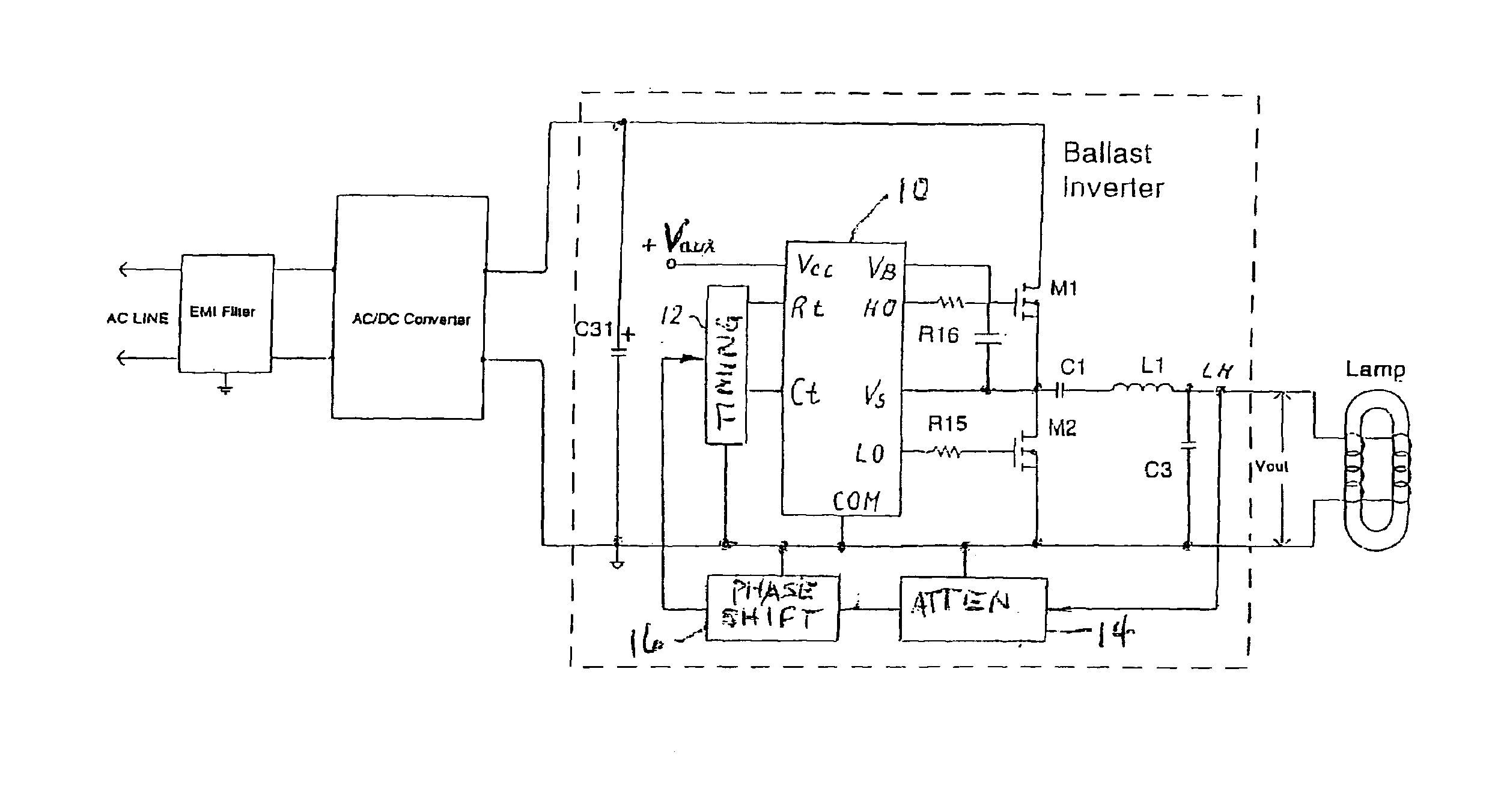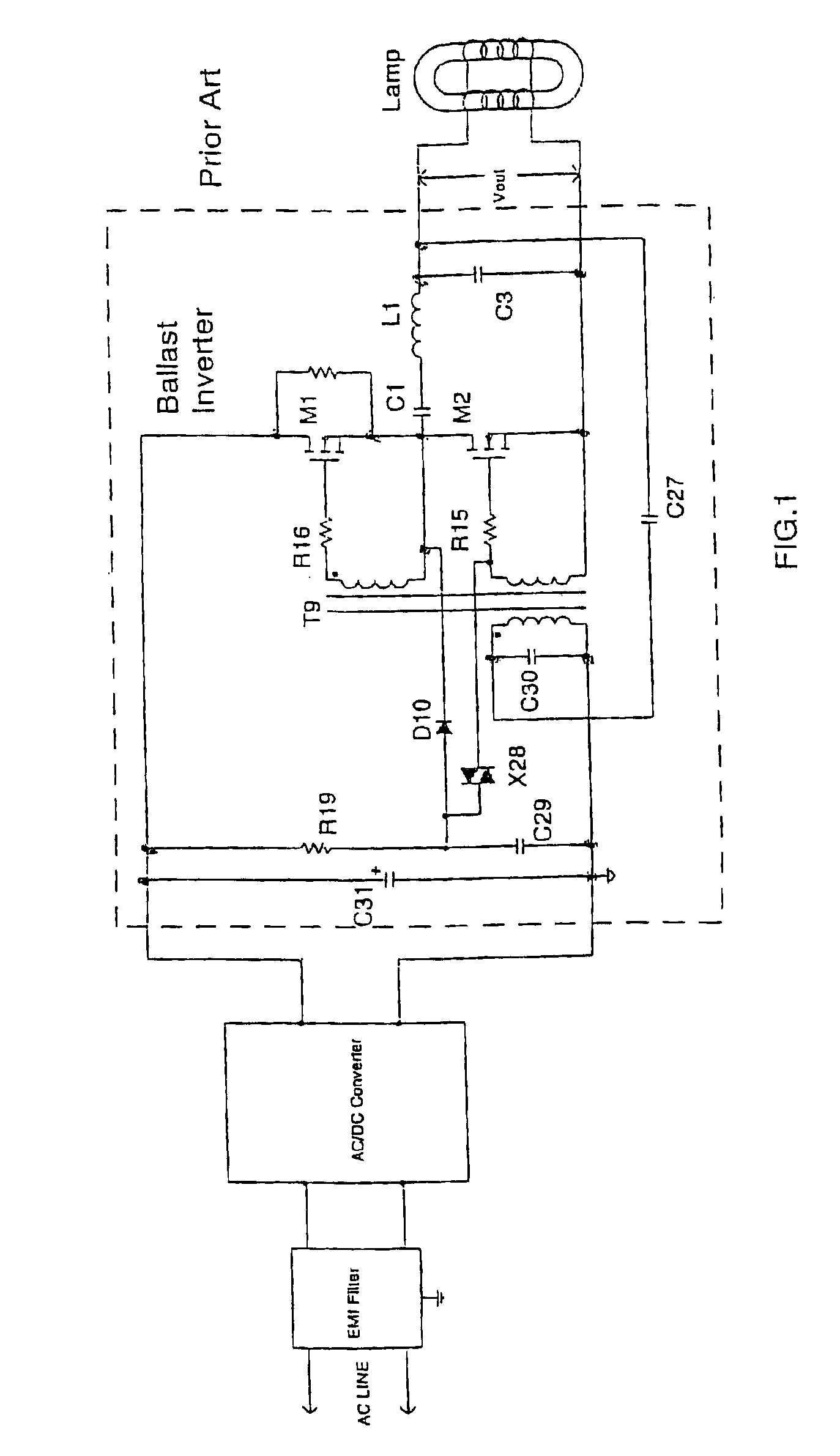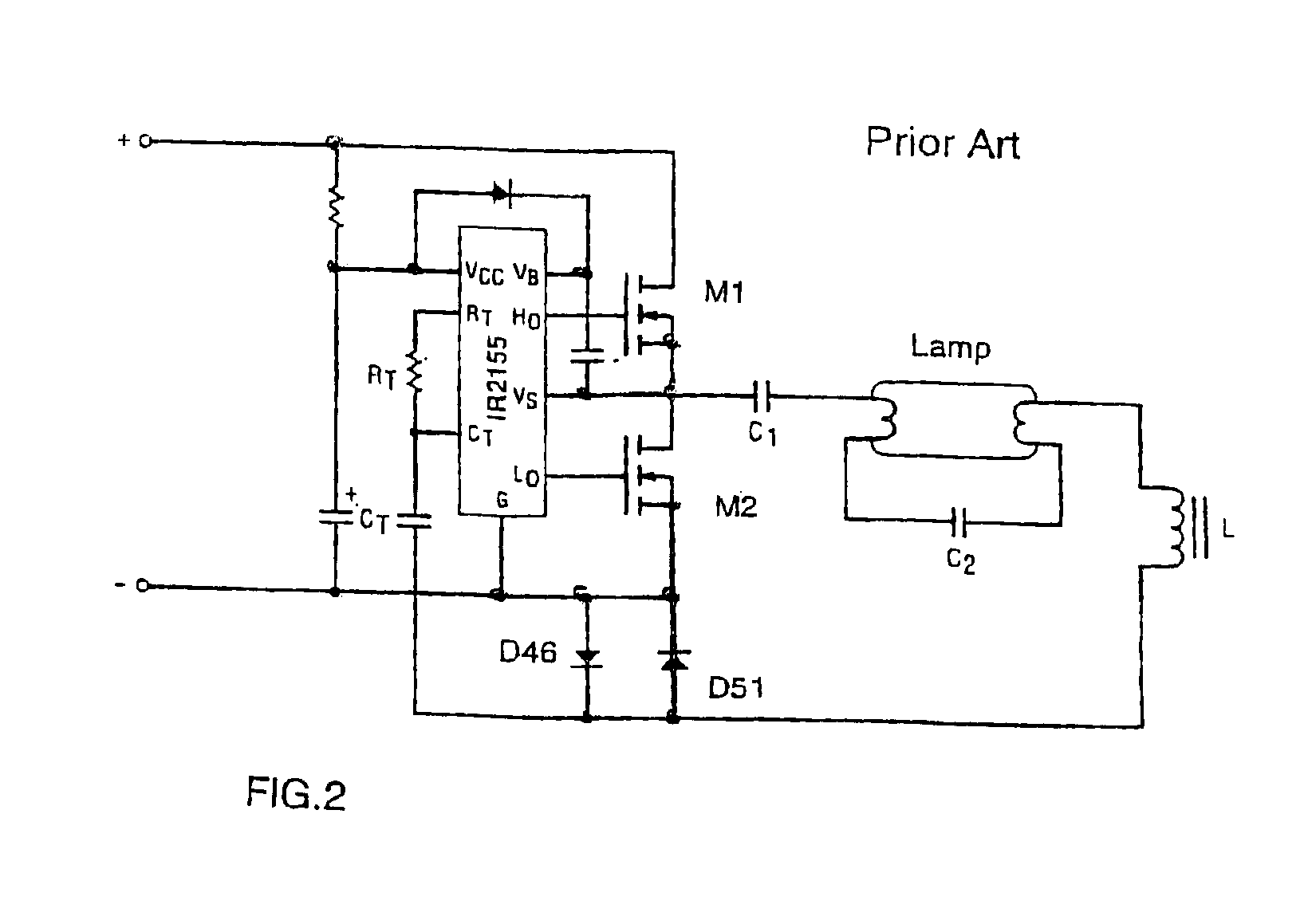Feedback circuit and method of operating ballast resonant inverter
a ballast resonant inverter and feedback circuit technology, applied in the field of dc/ac inverters, can solve the problems of direct application of the above-mentioned controller, lamp power variation, and dead time variation
- Summary
- Abstract
- Description
- Claims
- Application Information
AI Technical Summary
Benefits of technology
Problems solved by technology
Method used
Image
Examples
Embodiment Construction
[0033]With reference now to FIG. 3, a self-oscillating driver IC 10 drives half bridge power stages with transistors M1 and M2 generating an AC voltage across the input of a resonant load. IC 10 has a built-in oscillator that is, or is similar to, the “555” timer of the prior art. Oscillator frequency can be programmed with a timing circuit 12 coupled to pins Rt, Ct and common “com”.
[0034]The feedback circuit includes blocks 14 and 16 that couple inverter high voltage output LH to timing circuit 12. Block 14 attenuates the output voltage signal and block 16 phase shifts the output voltage signal from 150° to 200° to compensate for the phase difference between the inverter output voltage and the external synchronization signal.
[0035]Timing circuit 12 may include a timing capacitor Ct and resistor Rt (see FIG. 2) and switches when the timing capacitor is charged to ⅔ Vcc and discharged to ⅓ Vcc. In a standard IC application, the timing capacitor voltage waveform is an exponential ramp...
PUM
 Login to View More
Login to View More Abstract
Description
Claims
Application Information
 Login to View More
Login to View More - R&D
- Intellectual Property
- Life Sciences
- Materials
- Tech Scout
- Unparalleled Data Quality
- Higher Quality Content
- 60% Fewer Hallucinations
Browse by: Latest US Patents, China's latest patents, Technical Efficacy Thesaurus, Application Domain, Technology Topic, Popular Technical Reports.
© 2025 PatSnap. All rights reserved.Legal|Privacy policy|Modern Slavery Act Transparency Statement|Sitemap|About US| Contact US: help@patsnap.com



